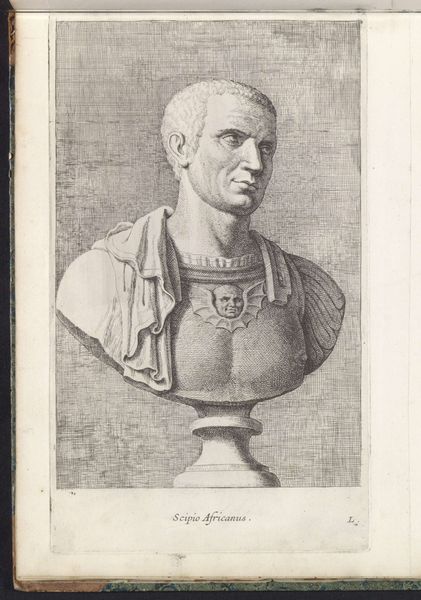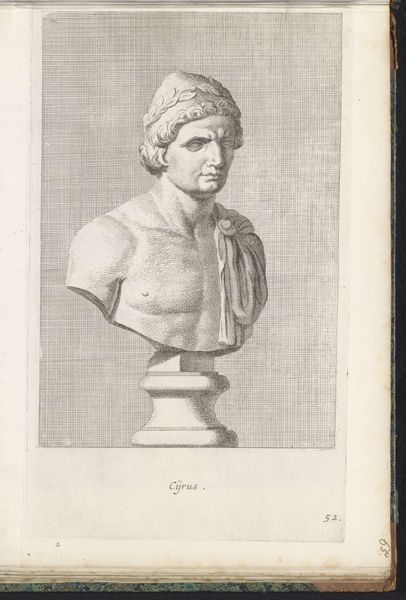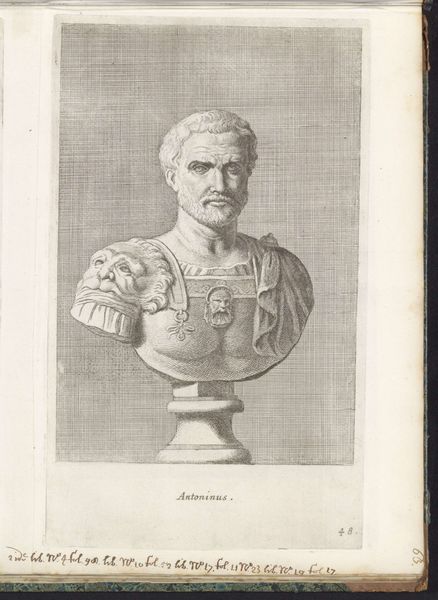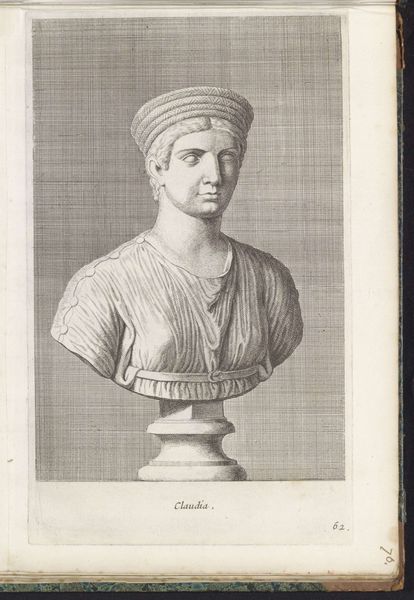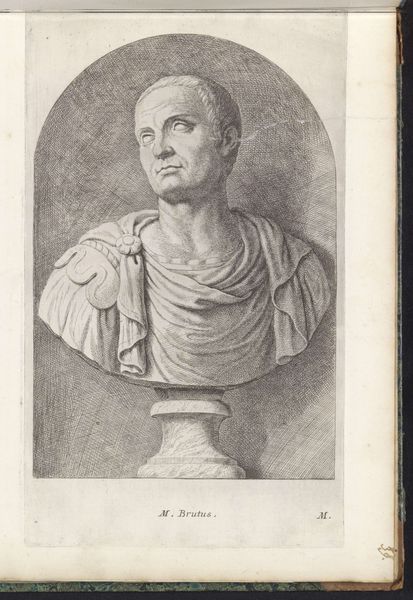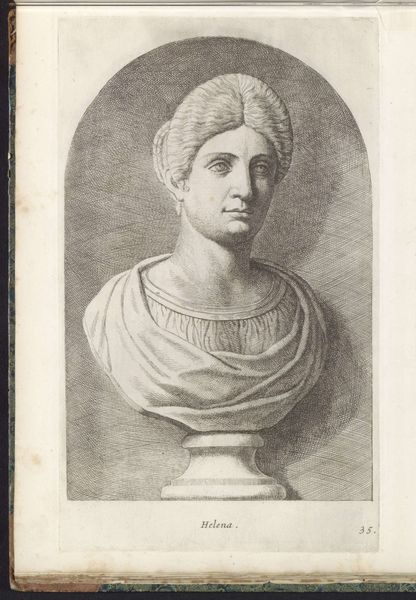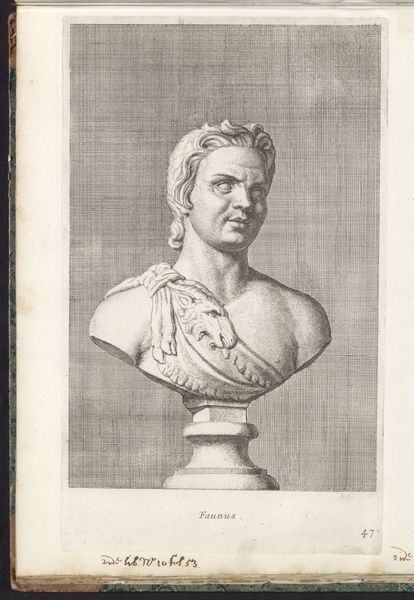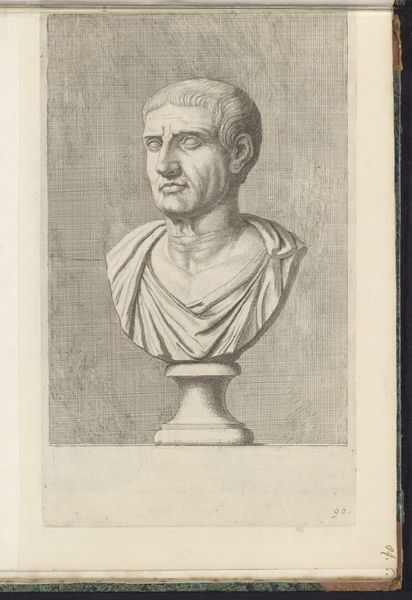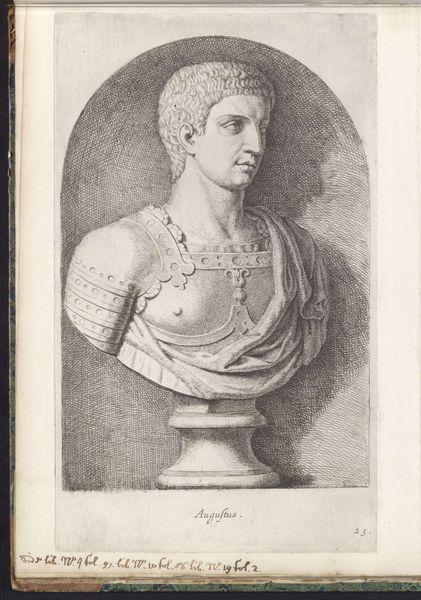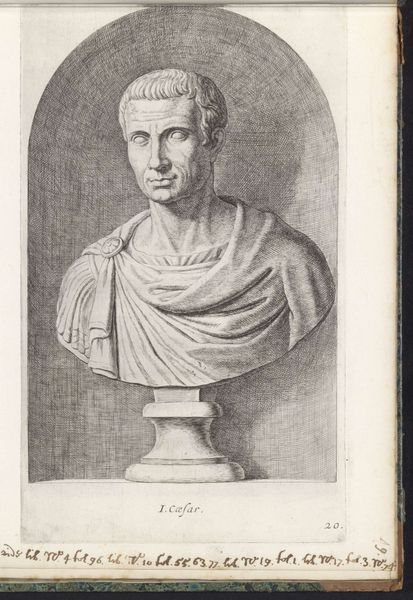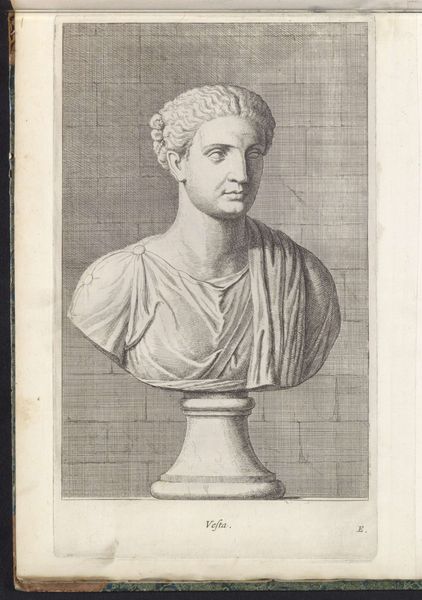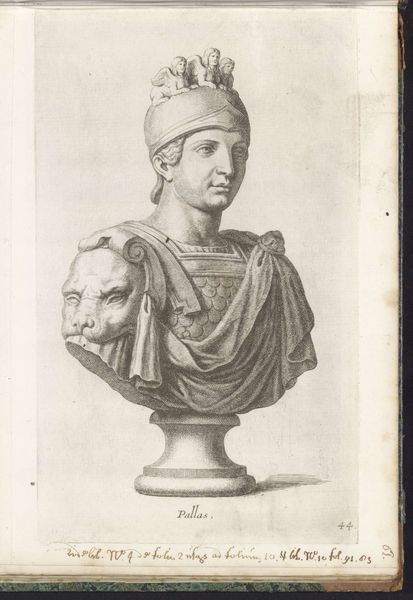
drawing, print, engraving
#
portrait
#
drawing
# print
#
classical-realism
#
figuration
#
romanesque
#
ancient-mediterranean
#
portrait drawing
#
history-painting
#
engraving
#
realism
Dimensions: height 325 mm, width 194 mm
Copyright: Rijks Museum: Open Domain
Editor: This is Hubert Quellinus's "Bust of Emperor Tiberius," dating back to between 1646 and 1670. It’s a monochrome engraving, almost ghostly in its depiction of power. The Roman-ness practically leaps off the page! What can you tell me about the cultural context surrounding this work? Curator: It’s fascinating how artists continually re-interpret historical figures through the lens of their own time. Here, we have a 17th-century Dutch artist looking back at ancient Rome. Think about what Rome represented then - order, law, a powerful empire - and consider the role that imagery plays in constructing such narratives. How does this image of Tiberius engage with or challenge those established ideas? Editor: I suppose it’s quite...classical, really. You see the Roman idealized features in the portrait, so it looks reverential, perhaps legitimizing power through this historical connection? Curator: Precisely! This image wasn’t just about showing what Tiberius looked like. It was about power, and how the display of power worked within a 17th century frame. Also think about who would have viewed and interacted with this image, how images and printed matter spread ideology, and how the role of an Emperor like Tiberius looked from a post-imperial Europe that was constructing itself through nation states, cities and new forms of governance. Editor: It's intriguing how the past is constantly re-imagined and how that reimagining says so much about the present. It really sheds light on how history and art become tools, in a way, for shaping societal ideas. Curator: Indeed. The politics of imagery are always at play, whether consciously or unconsciously, influencing how we perceive history and ourselves. And consider how, even now, museums and galleries continue to shape these perceptions.
Comments
No comments
Be the first to comment and join the conversation on the ultimate creative platform.
